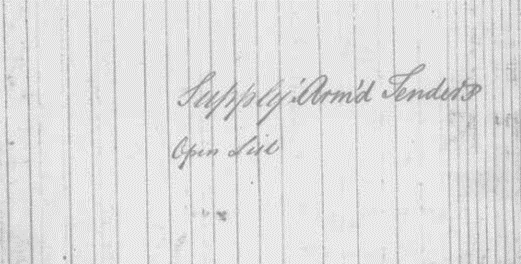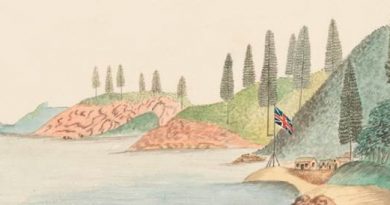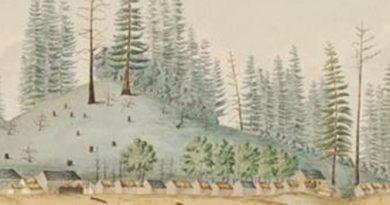HMAT Supply vs HMS Supply
The 70-foot brig-rigged sloop, of 170 tons, HMAT Supply, was a Royal Navy vessel which arrived, as vanguard of the First Fleet, at Botany Bay on 18 Jan 1788.
Yes … HMAT ….. so why are academic institutions, authors, family historians and others still today referring to the vessel as HMS. The answer appears to be simple but systemic confusion. Some reasons have been suggested:
• Confusion, arising from the arrival, in 1795, of (the real) HMS Supply, under the command of Lt. William Kent, as a REPLACEMENT for HMAT Supply, 4 years after her return to Britain commanded by Capt. John Hunter of HMS Sirius fame.
• Confusion created by the naval designation of Australia’s WWI troop transports which were named HMAT (HM Australian Transport).
The Logs and Musters of the vessel clearly identify her as Supply Armed Tender …. NOT HMS (His Majesty Ship).
We refer also to the various journals kept by the professional naval officers of the First Fleet, who above all others would have been bound by the naval nomenclature of the 1780s, commencing with no less an authority than Captain Arthur Phillip, of the Navy, Governor and Commander in Chief of the territory of New South Wales, and of his Majesty’s ships and vessels employed on that coast, whose journal preamble includes a description of the fleet, led by:
- His Majesty’s ship Sirius, Captain Arthur Phillip. (&) Captain John Hunter and
- His Majesty’s armed tender Supply, Lieutenant H. L. Ball.
Contemporary journalists Captain John Hunter, Lt. William. Bradley, seaman Jacob Nagle, Midshipman Southwell, Surgeons White & Bowes Smyth and Captain David Collins consistently refer to the Supply as simply the Supply or armed tender, H.M brigg, brig, or tender (never HMS). The 1792 – 1796 Norfolk Island Victualling Book also refers to Supply exclusively as HM Armed Tender.
Naval Lieutenant P G King (future Governor) during his first command of Norfolk Island, assiduously referred to SUPPLY as HMAT, evidenced below (among a dozen entries, including his description of the arrival of Sirius and Supply on the fateful voyage of the loss of Sirius)
- Thursday 3rd [December, 1789] … SSW Do Fresh Breezes & pleasant Weather at Daylight perceived His Majesties Armed Tender Supply at 8…
- Friday 29 [January, 1790] … Bad Landing Moderate Breezes & Cloudy Weather. at day light perceived His Majesties Armed Tender Supply in the Road….
- Saturday 13th [March, 1790] … S W Very Bad Landing…… at day light perceived His Majesties Ship Sirius & Supply armed Tender in the Offing at 10 Received the despatches from Ball Bay…..
- [Nov 1791] …“t the same day the Queen transport arrived, with the remainder of Capt Paterson’s company, some convicts & a seaman who was discharged from the Supply armed tender, to become a settler (Journal of Philip Gidley King 1791 – 1796. NLA, MS 70: 1).
A thank you to Jonathan Heppell who revisited these concerns with the Fellowship of First Fleet Fleeters as acknowledged in their 2020 Founders (magazine) Volume 51 Issue 04for us. Similarly, this premise is at the time of writing under consideration by both the State Library of NSW and the recently reconstituted Museums of History NSW (which now includes State Records of NSW).
HMAT Supply Australia Post stamp: When Australia Post published the Maritime Models stamps in 2021. they correctly used HMAT Supply.
Australian History Research has published the following on some of the HMAT Supply early colonial voyages:
- Norfolk Island landing party 6 March 1788 HMAT Supply
- People of HM Supply to Norfolk Island March 1789 Ebook
- Our New Home: HM Supply Norfolk Island Dec 1789 and Jan 1790 Ebook
- HMAT Supply Norfolk Island March 1790 Ebook
So here we are in 2023, 235 years after the arrival of HMAT Supply with the other ships of the First Fleet, and now blessed by unprecedented access to digitisation of these original sources.
It is surely time for all to review their writing (online & otherwise) static displays and research, and identify the Supply as HMAT Supply (in NSW and Norfolk Island waters 1788 – 1792) and not to perpetuate the errors, assumptions and confusion of earlier chroniclers by using HMS Supply.



